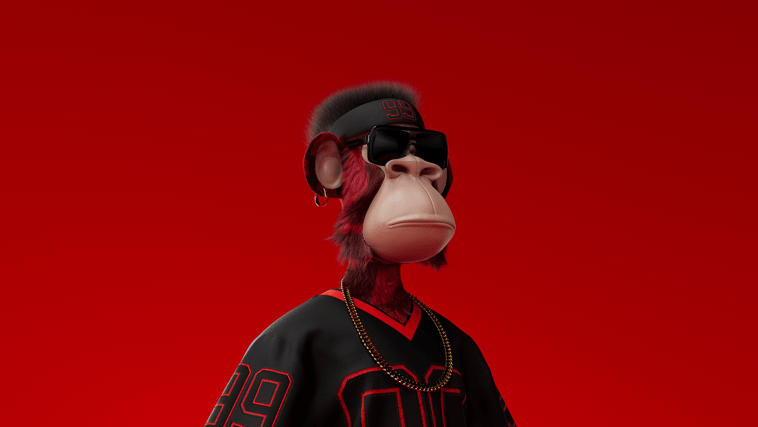Introduction.
Creating an NFT (Non-Fungible Token) has become a fascinating and innovative way to showcase and sell digital artwork, collectables, and other unique items on blockchain platforms.
The rise of NFTs has captured the attention of artists, collectors, and enthusiasts alike, with notable projects like Bored Ape Yacht Club gaining immense popularity.
If you’re interested in creating your own NFT project similar to Bored Ape, this guide will provide you with a step-by-step introduction to how to get started.
In this tutorial, we will explore the fundamental aspects of creating an NFT project, including concept development, artwork creation, smart contract deployment, and minting on a blockchain marketplace.
While the specific details may vary depending on the platform and tools you choose, this guide will give you a general understanding of the process involved in bringing your unique NFT project to life.
Please note that creating an NFT project requires some level of technical knowledge, familiarity with blockchain concepts, and potential collaboration with artists and developers.
However, with the right resources and a clear vision, you can embark on an exciting journey to create an NFT collection that resonates with a passionate audience.
Let’s dive in and explore the steps involved in creating an NFT project similar to Bored Ape, and unlock the potential of this vibrant digital art form.
How Do I Create an NFT Like Bored Ape?
One notable example that has captured the attention of enthusiasts and investors alike is the Bored Ape Yacht Club.
With its distinctive and highly sought-after ape-themed collection, the Bored Ape project has become a symbol of the NFT revolution.
If you’re interested in creating your own NFT project inspired by the success of Bored Ape, this article will guide you through the essential steps to bring your vision to life.
1. Conceptualize Your Project.
The first step in creating an NFT project like Bored Ape is to develop a compelling concept. Consider what unique theme or idea you want your collection to revolve around.
It could be anything from animals to abstract art or even a specific genre. Brainstorm and explore various ideas until you find one that resonates with you and has the potential to captivate a passionate audience.
2. Artwork Creation.
Once you have a solid concept, it’s time to create the visual assets for your NFT collection. This is a crucial aspect that will define the appeal and value of your project.
You can choose to create the artwork yourself if you possess the necessary skills, or collaborate with talented artists who share your vision.
Focus on crafting high-quality, visually striking images or animations that will make your NFTs stand out from the crowd.
3. Choose a Blockchain Platform.
Next, you’ll need to select a blockchain platform to mint and host your NFTs. Ethereum is currently the most popular choice for NFT projects due to its widespread adoption and robust infrastructure.
However, other blockchain platforms like Binance Smart Chain and Flow are also gaining traction in the NFT space.
Research the pros and cons of each platform, considering factors such as transaction costs, scalability, and community support, before making your decision.
4. Smart Contract Development.
To create your NFTs, you’ll need to deploy a smart contract on your chosen blockchain platform. A smart contract is a self-executing code that defines the rules and functionalities of your NFTs.
If you have programming skills, you can write the smart contract yourself using Solidity (for Ethereum) or other compatible languages.
Alternatively, you can seek the assistance of a blockchain developer or utilize existing NFT marketplace platforms that provide smart contract templates.
5. Minting Your NFTs.
With the smart contract in place, it’s time to mint your NFTs. Minting refers to the process of creating and tokenizing your artwork on the blockchain.
Each NFT will have a unique identifier and metadata that represents its ownership and characteristics.
Utilize tools like the OpenSea or Rarible minting platforms, or leverage the services provided by your chosen blockchain platform to mint your NFTs securely.
6. Community Engagement and Marketing.
Building a vibrant community around your NFT project is crucial for its success. Engage with potential collectors, art enthusiasts, and crypto communities through social media platforms, forums, and online events.
Share the story behind your project, provide sneak peeks of upcoming releases, and create a sense of exclusivity and excitement.
Collaborate with influencers and utilize targeted marketing strategies to generate buzz and attract potential buyers.
7. NFT Launch and Secondary Market.
Once your NFT collection is minted, it’s time to launch and list them for sale on NFT marketplaces. Choose reputable platforms that align with your target audience and provide the necessary exposure for your project.
Set a price that reflects the perceived value of your NFTs and monitor the market to adjust pricing if needed. Additionally, consider implementing royalty fees to earn a percentage of future resales, which can provide ongoing revenue streams.
8. Community Management and Iteration.
Managing your community and keeping them engaged is an ongoing process. Continually interact with collectors, listen to their feedback, and consider implementing updates or additional features based on their suggestions.
Regularly release new editions or variations of your NFTs to maintain interest and offer a sense of rarity.
Building a strong and loyal community will not only enhance the value of your NFTs but also open doors for future collaborations and partnerships.
Conclusion.
Creating an NFT project like Bored Ape requires careful planning, creativity, and a strong understanding of the NFT ecosystem.
By conceptualizing a unique theme, creating captivating artwork, choosing the right blockchain platform, developing smart contracts, minting your NFTs, engaging with the community, and launching on reputable marketplaces, you can embark on an exciting journey to bring your vision to life.
Remember, the key to success lies in creating a captivating concept, delivering high-quality visuals, and nurturing an engaged community that shares your passion for digital art and collectables.






GIPHY App Key not set. Please check settings